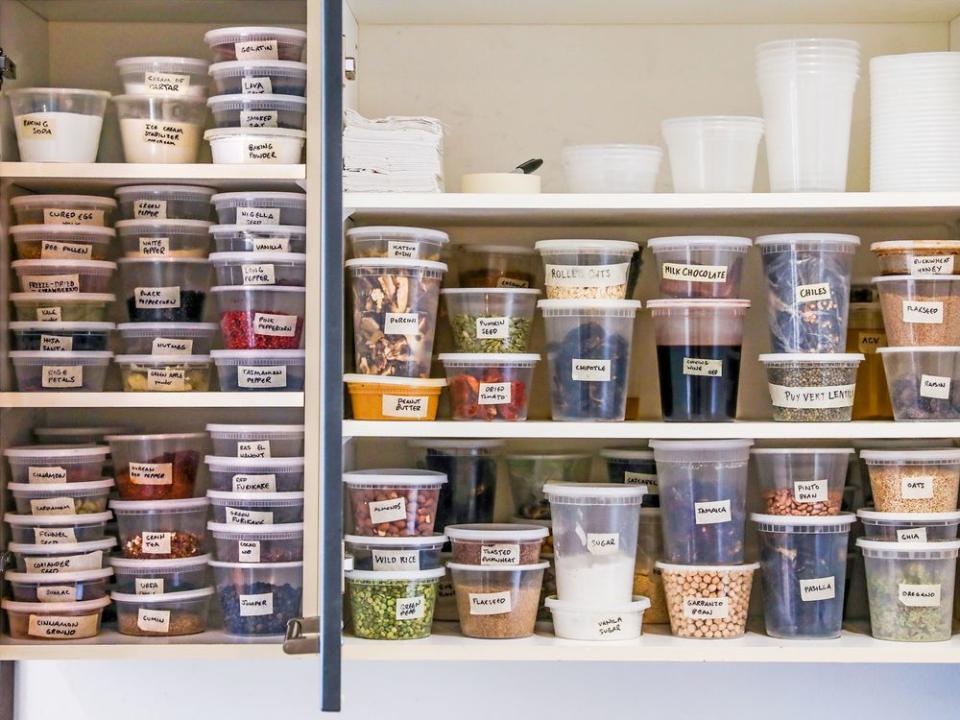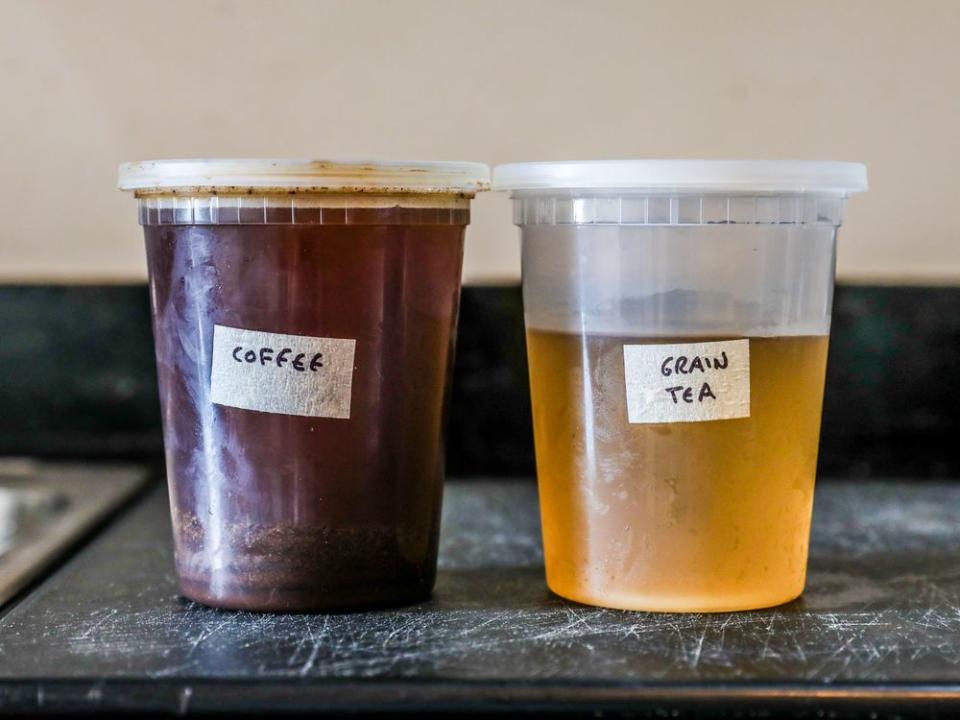These Inexpensive Containers Will Make You a Better Cook
In Supper Club, Jonah Reider taps into the joys of do-it-yourself hospitality, sharing his essential tips, tools, and no-stress recipes to become a more creative, improvisational, and confident host. Dine with Jonah at his supper club Pith or follow along his culinary adventures on Instagram.
As much as I love browsing esoteric cookbooks (I see you, 6-month-aged fish garum), my home cooking routine generally involves spontaneously throwing together ingredients that I already have on hand.
This improvisational attitude towards cooking is common, but often exasperating without the confidence that good tools, techniques, and a bit of organization can bring. And though I have plenty of suggestions for blenders, knives, and other kitchen tools, I’d encourage anyone to begin refining their home-cooking workflow with something more elemental: containers.
You’ve probably eaten take-out from these containers. But next time you’re at a trendy restaurant, peek into the kitchen — I guarantee you’ll see them, impeccably labeled and employed religiously for measuring, prepping, cooking, and storage. Unlike many other obsessive restaurant protocols, this one really works wonders in any home kitchen.

Deli containers, as they are called, have a lot going for them. They stack, allowing you to maximize cabinet or refrigerator storage. They are see-through, allowing you to quickly identify what’s what in a crowded pantry. You can microwave them, pour extremely hot liquids into them, and freeze them. They don’t leak, and their circular shape makes them easy to handle. They are much cheaper than glass containers and never shatter. They can be washed in any dishwasher and reused repeatedly. And, if you ever want to replace or remove them, they are easily recyclable.
RELATED: These Containers Are the Answer to Your Kitchen Organization Woes
Commit to storing everything possible in these uniform containers and your kitchen survives the chaos of everyday use while looking and feeling impressively organized. It doesn’t matter where exactly ingredients are if they’re easy to identify and access.
Labeling helps even more: I use a piece of masking tape labeled with a permanent marker, it stays put and comes off with no sticky residue. If you prefer, just write directly on the containers: “permanent" marker will come off with soap and hot water or with an alcohol wipe.

With a pantry and refrigerator full of labeled deli containers, rummaging through the kitchen to make stuff becomes … kind of fun. Below are a few of my favorite ways to use deli containers in day-to-day cooking and hosting.
Measuring
The containers come in three sizes (8 oz. half pints, 16 oz. pints, and 32 oz. quarts) which work perfectly for everything from tiny bits of leftovers to bulk grains. These sizes correlate perfectly to one, two, and four cups — so you can make room for your new deli containers by getting rid of unwieldy measuring cup sets. I don’t mind eyeballing 1/2 or 1/3 cup measurements, and neither should you.
Storing Herbs
Say goodbye to brown, slimy, two-day-old basil — pick herbs, wrap them in a damp paper towel, and refrigerate them in a small deli container. You’ll double or triple their shelf life.
Beverages
I brew a rich and exquisitely smooth iced coffee by letting ⅓ cup of roughly ground coffee beans soak in a one quart deli container of water for one day. Strain it through a paper or metal filter before drinking. I make iced tea the same way (three tea bags or two tablespoons of loose leaf tea per one quart container of water), and even add a lovely zing to tap water by letting it get icy cold in a quart container with a few orange peels.

Salad dressing
No one should ever buy salad dressing. You can mix two parts oil and one part acid (vinegar, citrus juice, or a combination of both) in a small deli container. Season with salt and pepper to your liking. Keep it simple, but if you want, add dried or fresh chilis for heat, chopped fresh herbs for freshness, thinly sliced shallots or garlic for some savory depth, anchovies for salty umami, or even yogurt for a bit of creaminess. Shake vigorously before serving, and make enough to use over and over.
Cooking flexibly
The labeled deli container lifestyle turns everything in your kitchen into a ready-to-go mise en place. Whether cooking for myself or for a large dinner party, I’ve learned to lean on dependable and flexible combinations of ready-to-go ingredients instead of technically demanding recipes with long shopping lists.
For example, my partner, Sarah, invented an excellent formula for a delicious and simple grain salad. Mix one ingredient from each category below together in ratios of your choosing. Season with citrus juice, olive oil, salt, and pepper and top with more fresh herbs and cheese.
1. Steamed or boiled grain (quinoa, barley, millet, rice, buckwheat groats)
2. Toasted nut (hazelnuts, pistachios, walnuts, or almonds)
3. Crumbled cheese (funky pecorino, sharp parmesan, briny feta, or creamy blue cheese)
4. Sliced vegetable (crunchy celery or radishes, sweet roasted beets or yams, bitter greens like radicchio or arugula, or no-shame frozen peas or canned artichoke hearts)
5. One herb (bright mint, vegetal dill, fragrant basil, or earthy parsley).
The result is a reliably delicious, complex, and healthy dish that’s perfect for a solo dinner or as part of a larger dinner party. And when all the ingredients you need are already in labeled deli containers, the assembly takes about two minutes.
The best kitchen tricks are those that are inexpensive, simple, and endlessly versatile. I have many more tasty and versatile formulas to share, but I promise that if you commit to the Container Lifestyle™, you’ll find your own unending ways that they improve daily cooking and hosting. Whatever you end up making, just remember to store leftovers in a nicely labeled deli container.
Buy a set of 44 BPA-free deli containers in three sizes on Amazon for $18. Add a Sharpie and a roll of masking tape if you want to go full pro.

